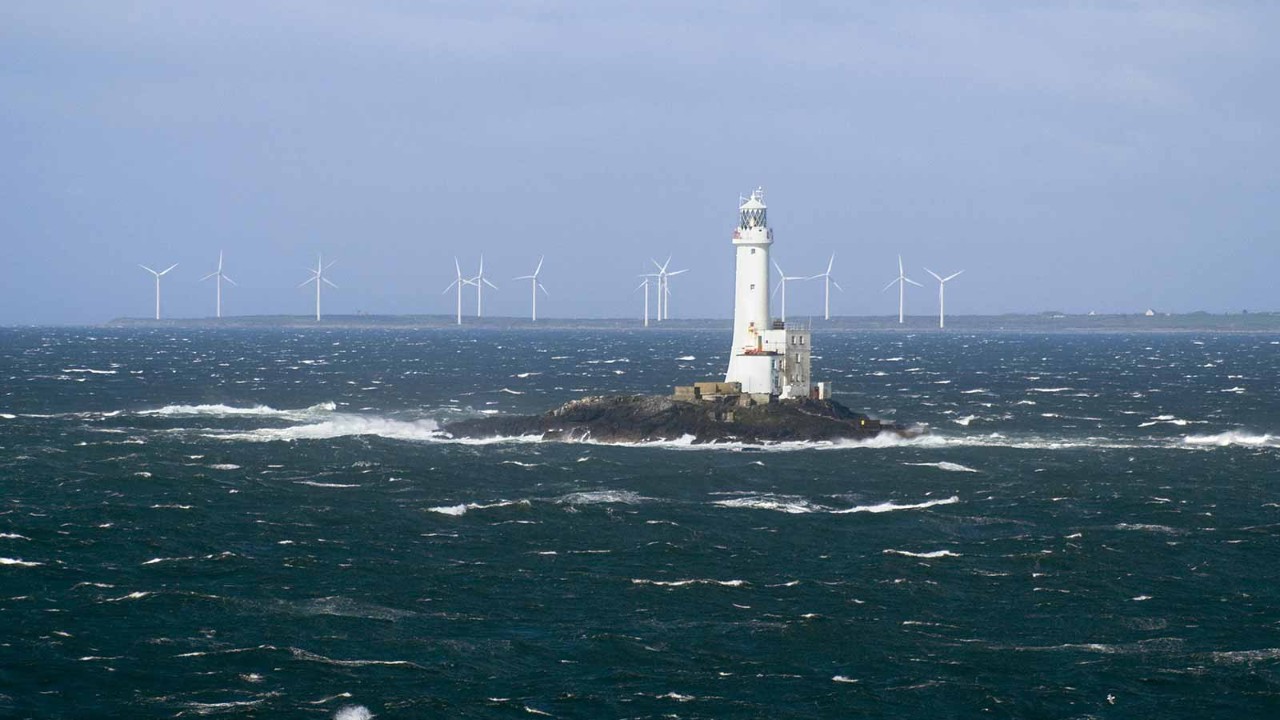
Wind farm developers have long been attracted by the scale and windiness of Ireland’s maritime economic zone area, which is 10 times the country’s landmass, giving it one of the largest accessible seabeds in one of the windiest parts of Europe.
The high winds blowing in from the Atlantic Ocean may prove the solution Ireland needs to ease its reputation as a laggard in climate action policies – a 2021 report found that the country has reduced emissions at a slower pace than the EU average since 2005.
‘This is Ireland’s 21st-century moonshot’
Navigation aids
Since then, the government has set out a roadmap outlining several actions designed to support its commitment to halve Ireland’s emissions by 2030 and reach net zero no later than 2050.
At the end of last year the Department of the Environment, Climate and Communications published its Climate Action Plan 2023 (CAP23), which highlights that ‘among the most important measures…. is to increase the proportion of renewable electricity to up to 80% by 2030 and a target of 9GW from onshore wind, 8GW from solar, and at least 5GW of offshore wind energy by 2030’.
CAP23 describes this as ‘a major step up’, while Taoiseach Leo Varadar calls it the country’s ‘21st-century moonshot’, saying that Ireland’s Atlantic wind potential could lead to the state becoming a major energy exporter.
Significant investment
To achieve the planned progress in the offshore energy market calls for an investment of €40bn, including €30bn in debt finance, estimates Robert Costello, leader of PwC Ireland’s capital projects and infrastructure practice, explaining the price tag includes expansion of Ireland’s ports infrastructure and grid. ‘The key to investment and funding [in offshore wind] is to understand a path to return on investment,’ he says.
‘It is vital to have firm funding commitments and a stable policy and planning environment’
However, a Cork University Business School report based on a survey of 214 firms in Ireland’s offshore industry, published in May, identifies insufficient support and engagement by government and a lack of funding as the main barriers to innovation.
‘In order to stimulate technological investment and commercialisation in the sector, it is vital to have both firm funding commitments and a stable policy and planning environment. Presently there is huge uncertainty around these factors in Ireland,’ says lead researcher Dr Frank Crowley, lecturer in economics at Cork University Business School and co-director of the Spatial and Regional Economics Research Centre at University College Cork.
Ireland’s renewables development is directed by the national Renewable Energy Support Scheme (RESS) subsidy framework, and includes a specific offshore framework (ORESS) developed for offshore wind power. The first phase of this scheme, known as ORESS 1, is similar to past support for onshore wind projects, with developers of windfarms producing projects for government approval and licensing.
‘Radical change has created uncertainty among international investors and the global supply chain’
In contrast, the newer and more ambitious phase of the offshore wind policy framework, the recently announced Second Offshore Renewable Energy Development Plan (also known as OREDP2), contains two major changes.
The first is a requirement that all future offshore wind farms must be built in Designated Marine Areas, which have yet to be identified and may not be for 18 to 24 months. Secondly, the plan proposes that future offshore wind farms will not connect to points on land, but to offshore substations to be designed and built by EirGrid, something never done by the company before.
Policy headwinds
Noel Cunniffe, CEO of Wind Energy Ireland (WEI), the body that represents wind farm developers and equipment suppliers, says: ‘This is a radical change in policy from government that has created massive levels of uncertainty among international investors and the global supply chain.
‘They are gambling that state agencies can identify Designated Marine Areas quickly. Unfortunately, our experience is that those agencies are grossly under-resourced and will struggle to deliver in time.’
‘Taking this approach will ultimately de-risk projects for the state and for investors’
As it stands, planning applications for onshore wind farms are supposed to be decided by An Bord Pleanála within 18 weeks, but WEI research suggests, on average, it is taking more than a year and fears it could take longer to review applications for future offshore projects that are far larger and more complex. Likewise, projects will rely on the build out of the national grid, a development which is proceeding slowly.
New regulator
Costello sees the government’s move as an effort to create long-term certainty that has created short-term uncertainty, noting that ‘taking this approach will ultimately de-risk projects for the state and for investors,’ but says it will take time and involves a heavy reliance on state agencies to get projects moving, including the newly established Maritime Area Regulatory Authority (MARA) charged with implementing a new maritime planning regime for offshore wind.
While the Maritime Area Planning Act was passed by parliament in 2021, not until May this year was it announced that the new regulator will be established on 17 July, led by Laura Brien, currently chief executive of the Health Insurance Authority.
Brighter future
In other areas, the government is pushing ahead. The public consultation on the national spatial strategy for the second offshore renewable energy development plan, designed to support a more plan-led approach to future developments, closed in April, while mid May saw the provisional results of the country’s first ever offshore wind auction. Four projects were successful and are set to deliver a total of 3.1GW of capacity, more than half of the overall 2030 offshore wind energy target.
These are welcomed as positive signs by the industry, with WEI’s Cunniffe predicting: ‘This is the day offshore wind energy in Ireland became more than just a good idea and took its place as the future cornerstone of Irish energy independence.’




